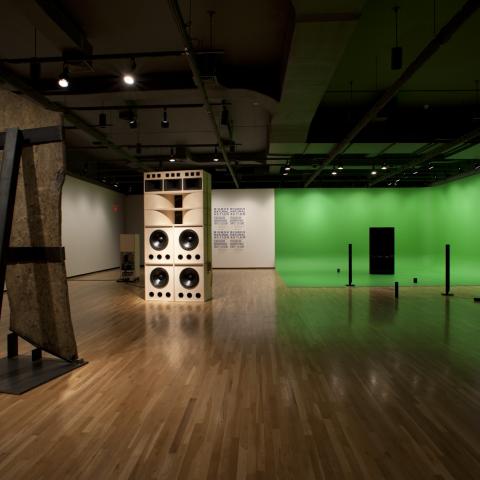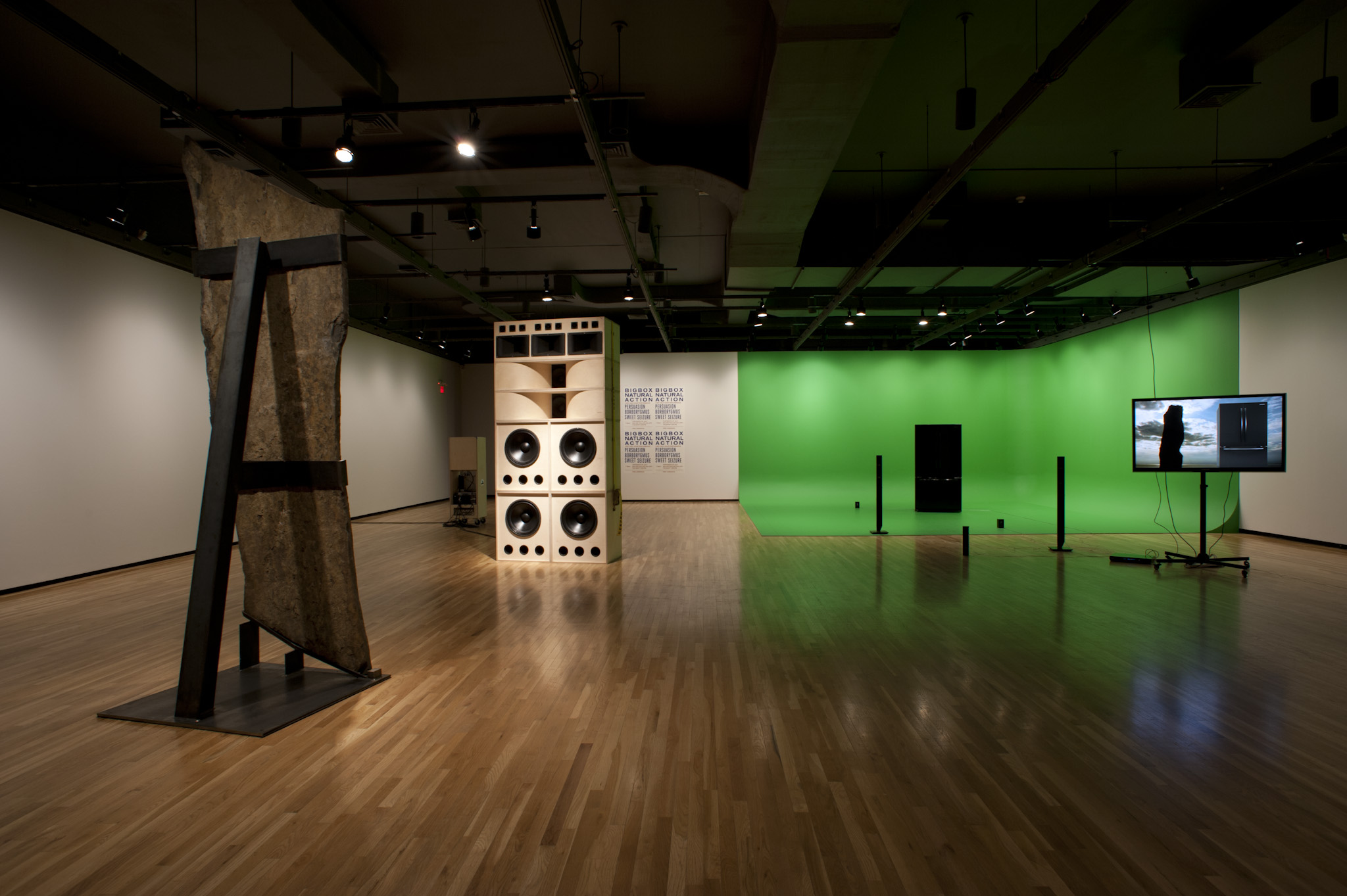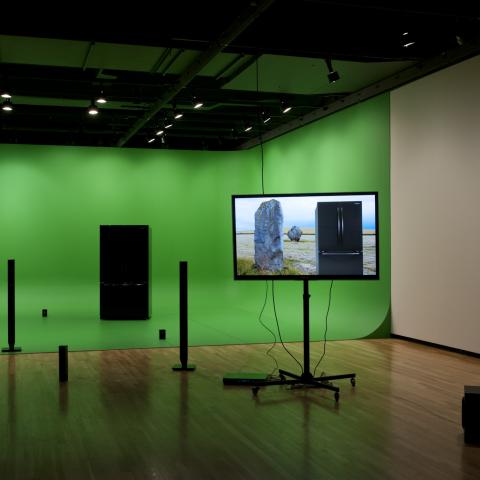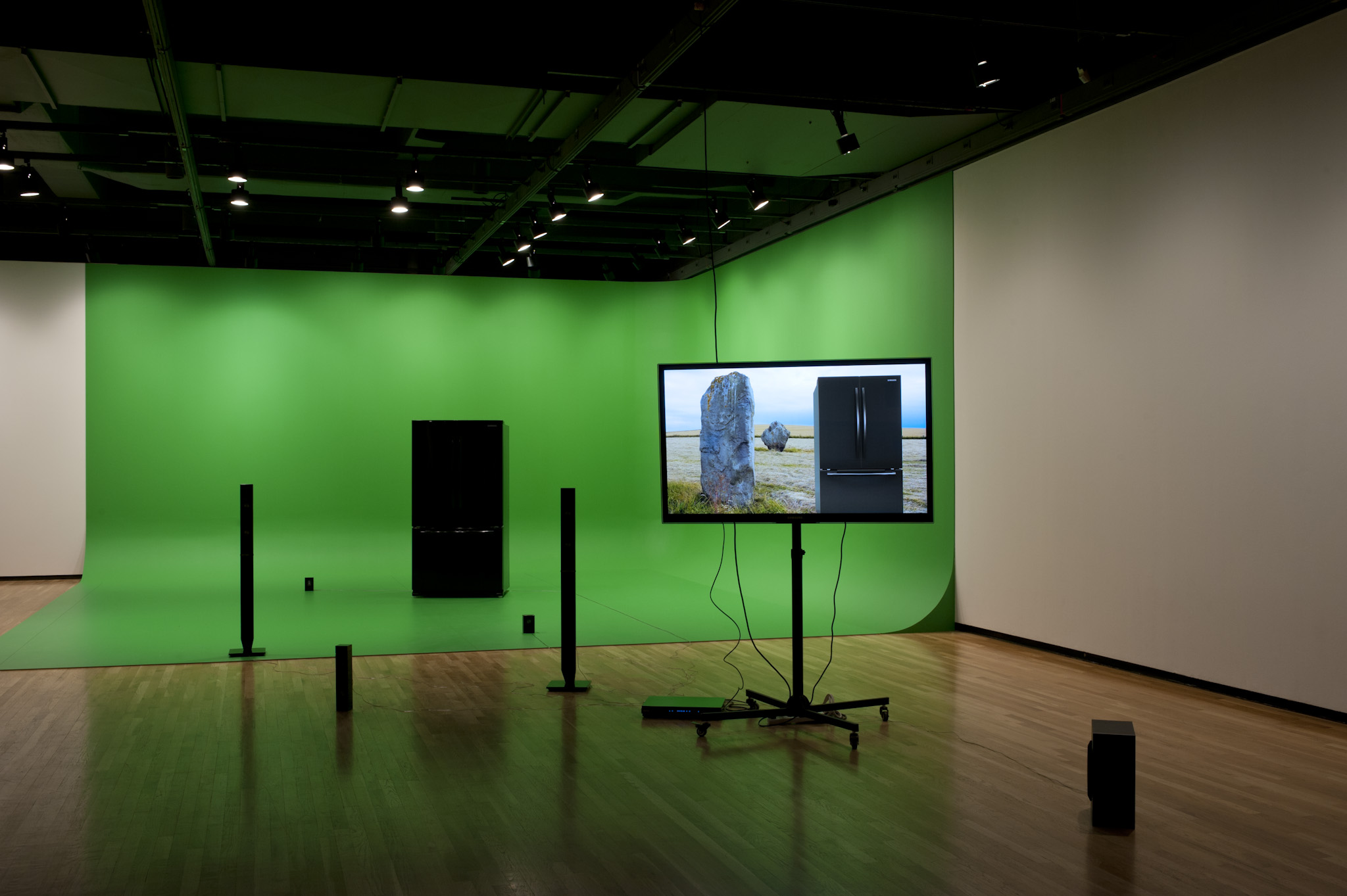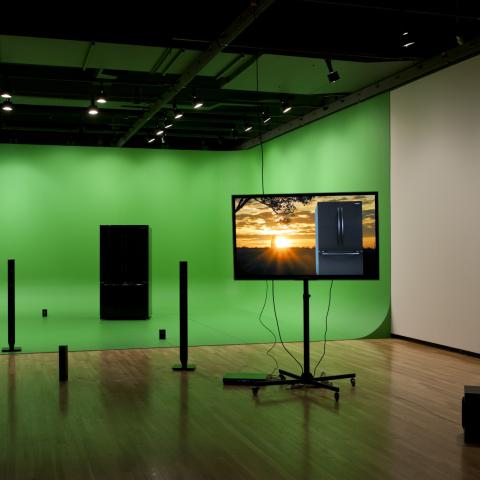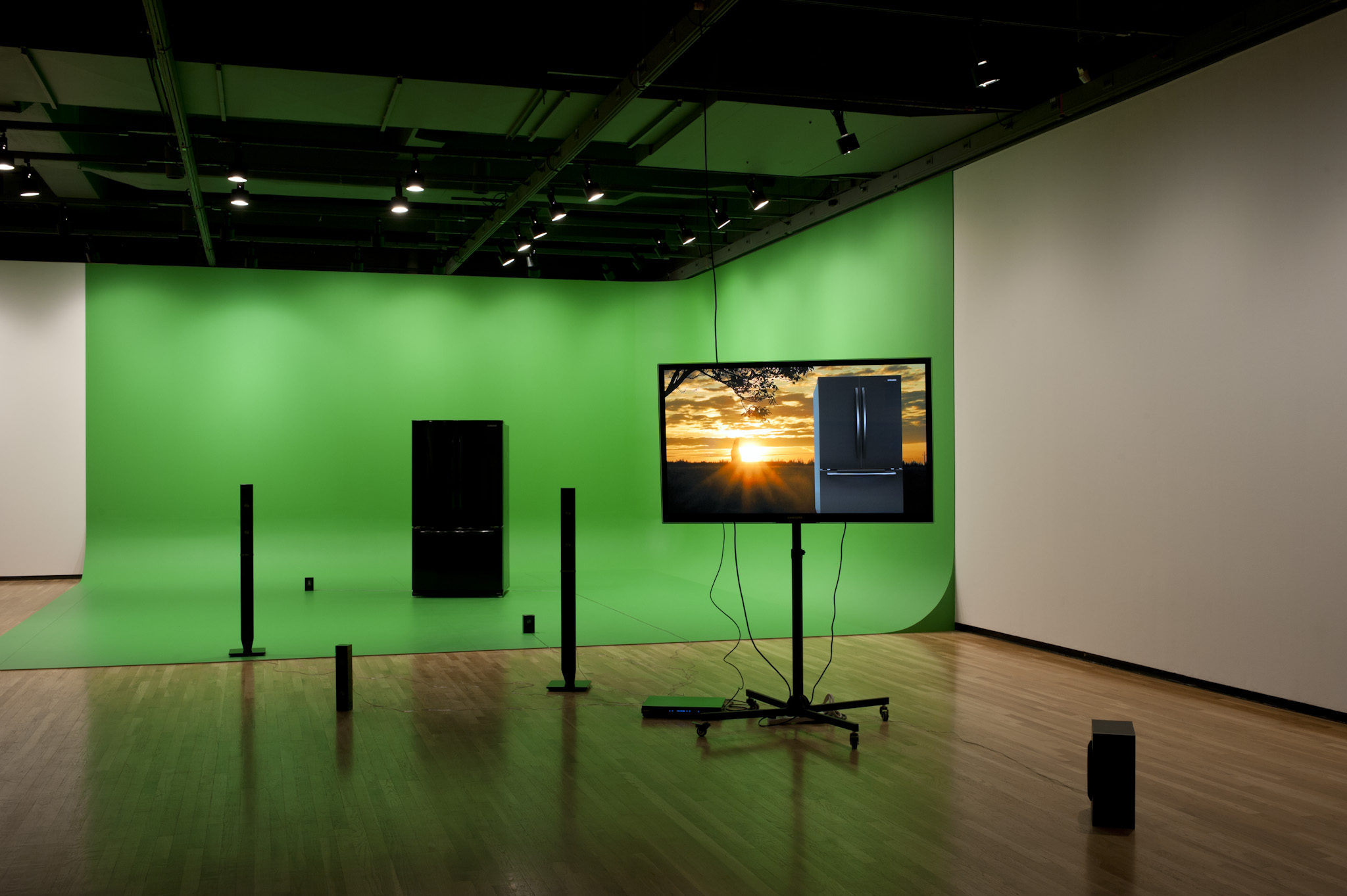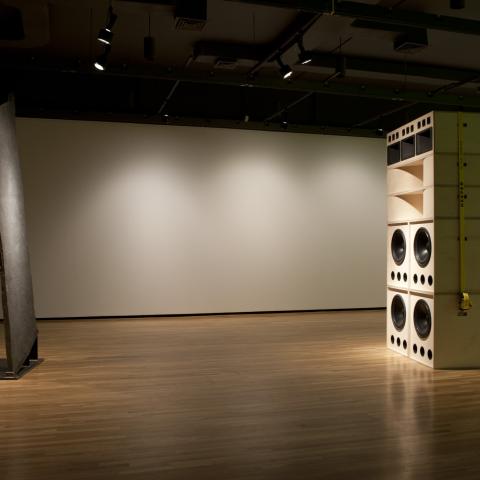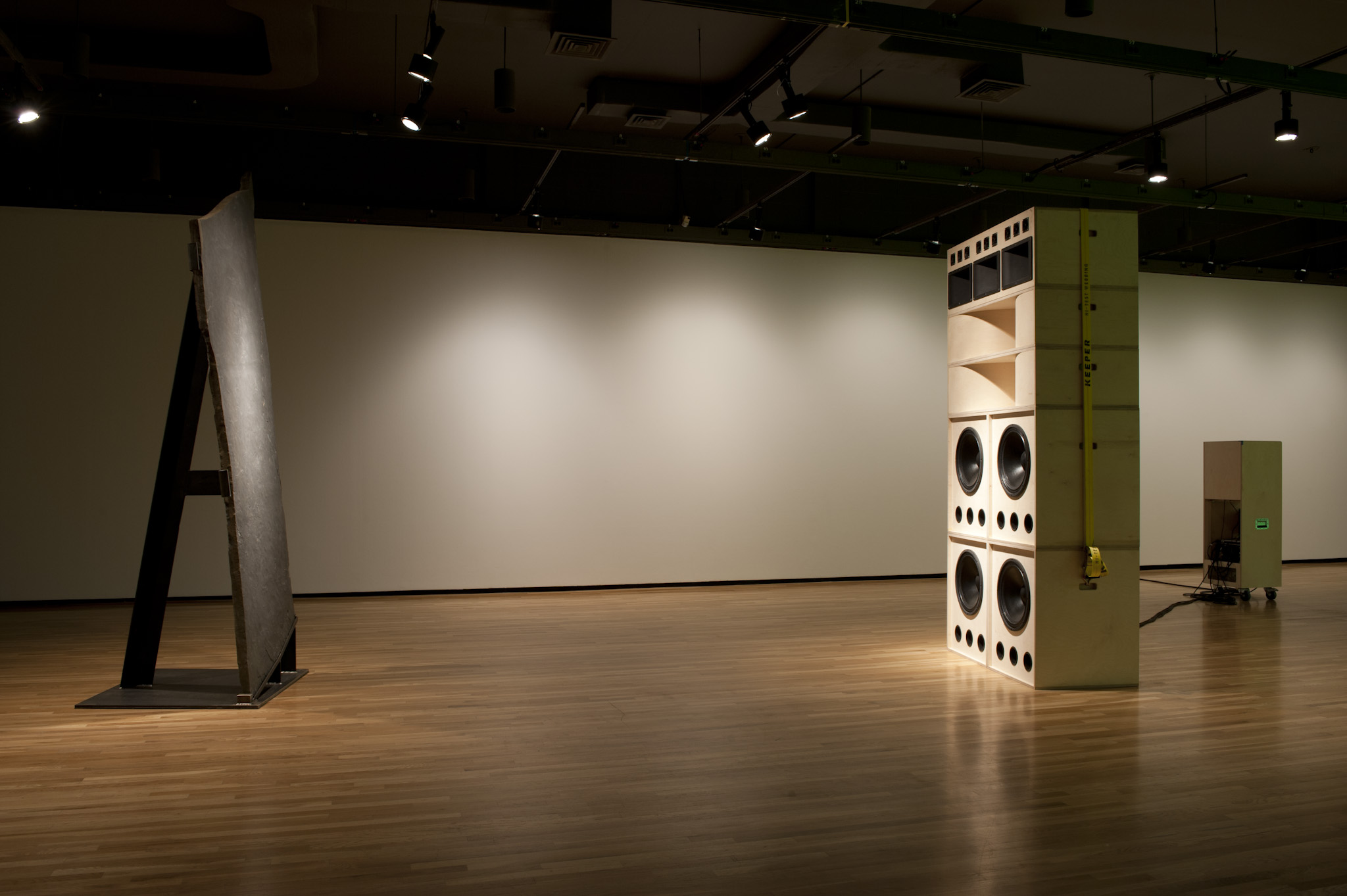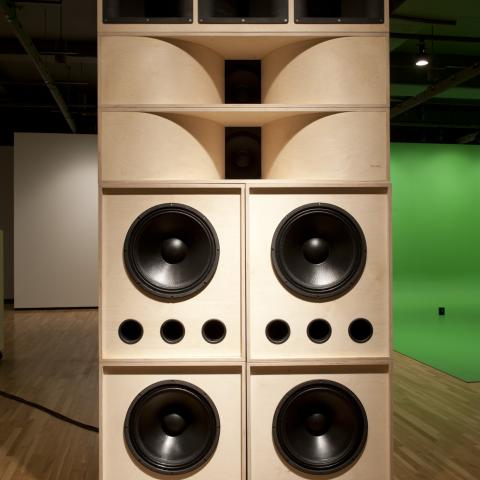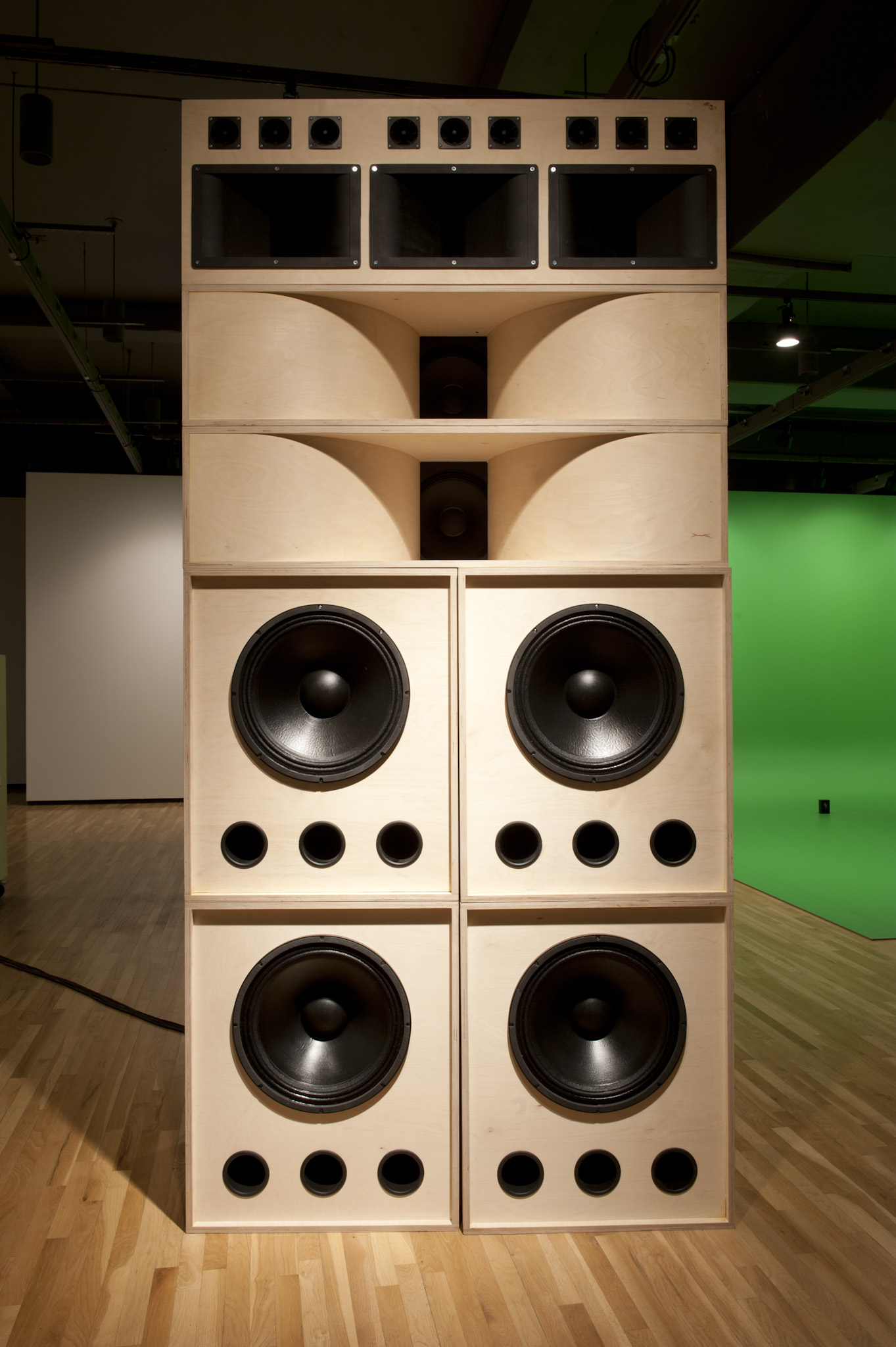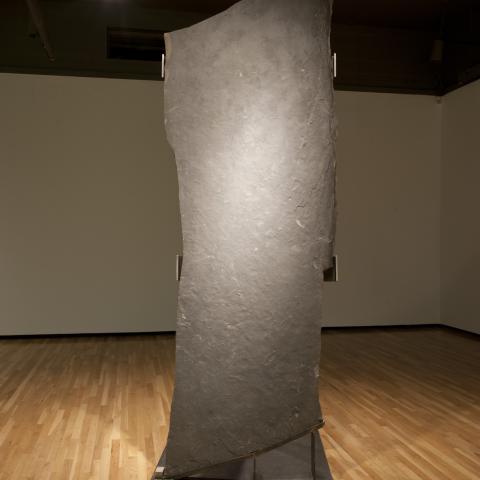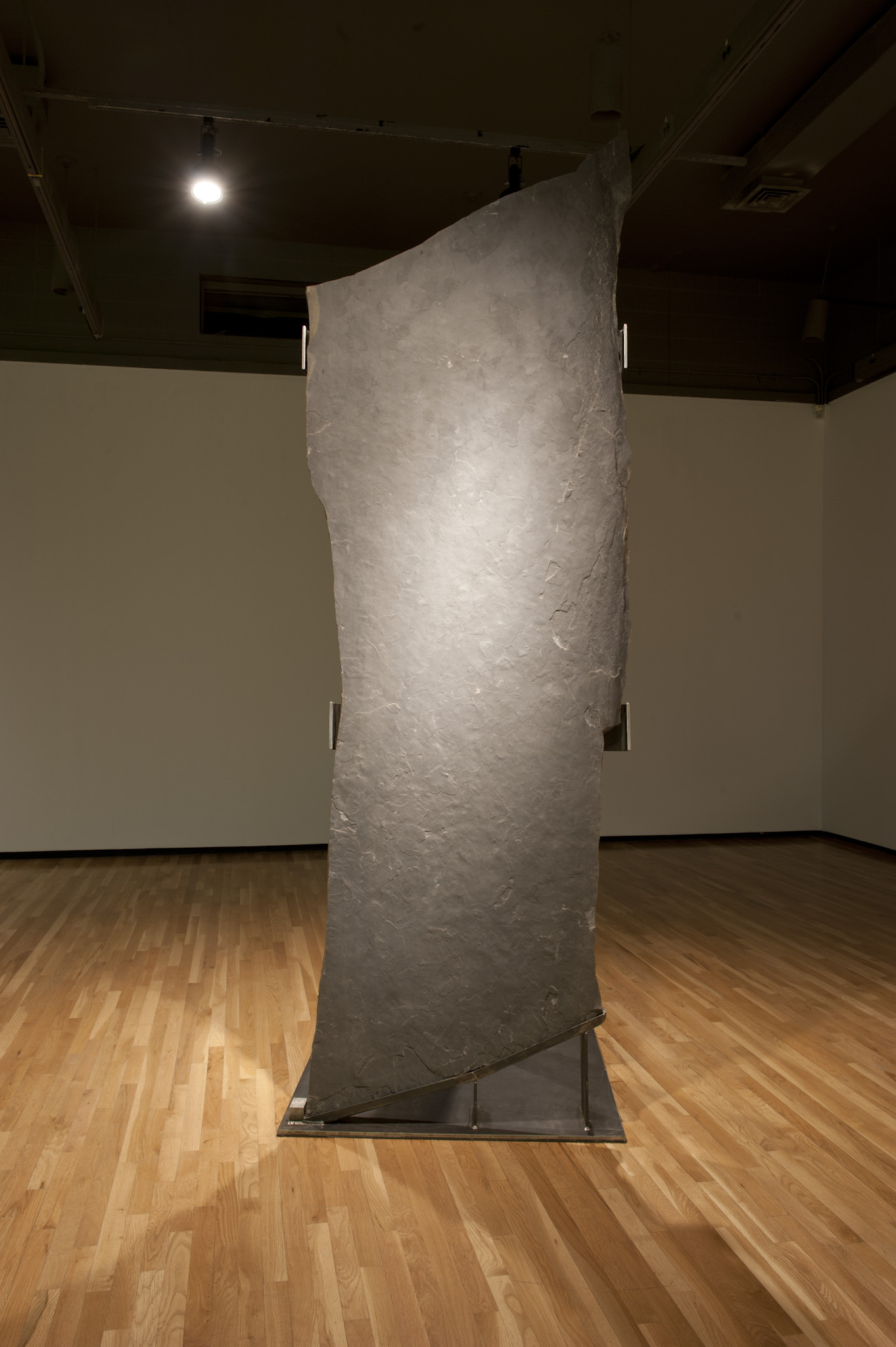April 28 – July 15, 2012
Mark Leckey
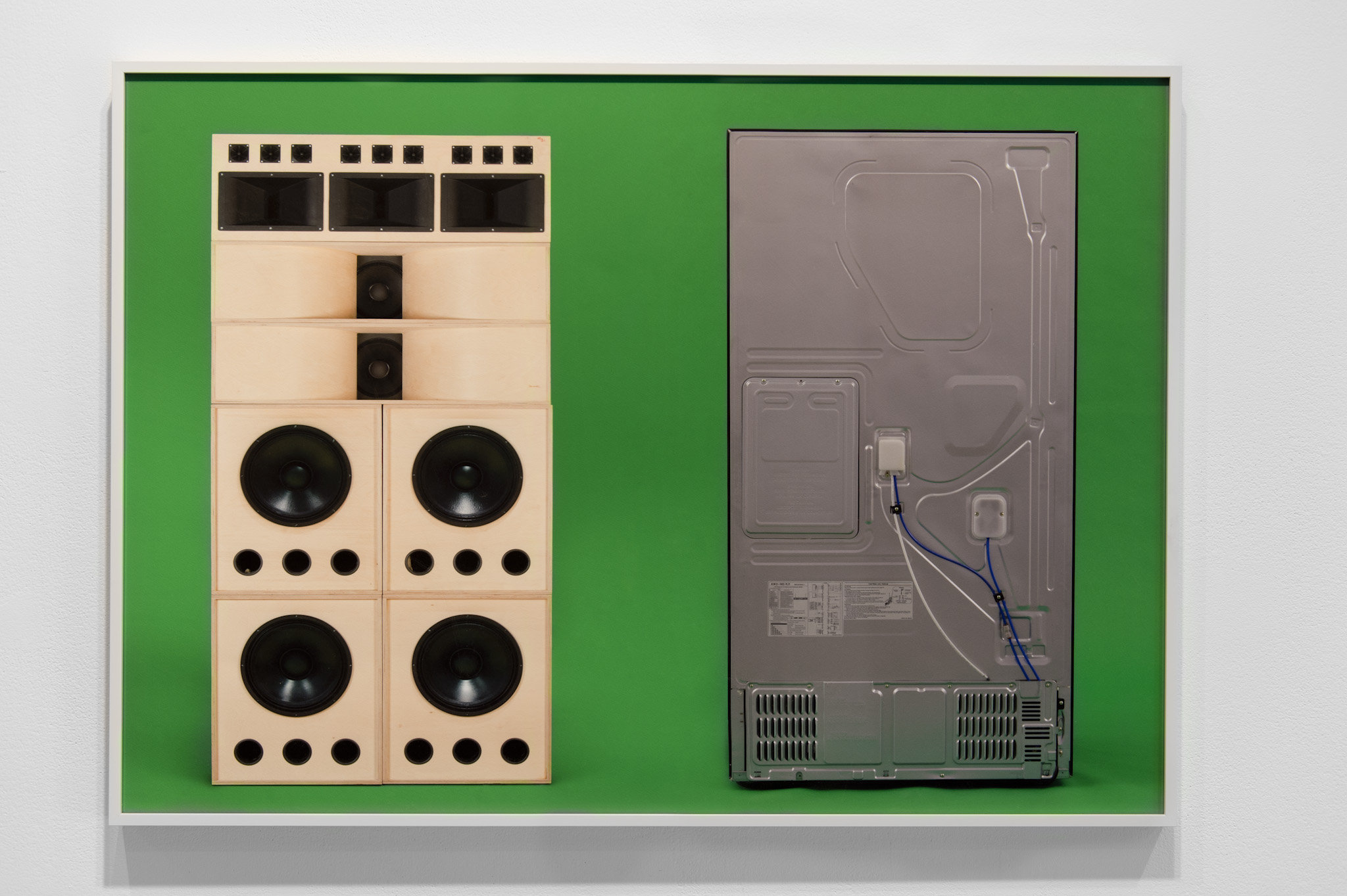
Mark Leckey, installation view of "BigBoxGreenScreenRefrigeratorActions" (2012). Walter Phillips Gallery, Banff Centre for Arts and Creativity. Photo by Kim Williams.
London-based Mark Leckey, recipient of the 2008 Turner prize, immerses himself in images and objects through a ritualistic process of communication. In doing so, Leckey consumes the already-made in order to conjure new experiences with it. His multi-disciplinary approach is rooted in performance and expands into sculpture, printmaking, sound and moving image.
In the early part of the last decade, Leckey began work with large speaker stacks to produce a series of performances. Compositions of sound, voice and music were directed through the speakers, which Leckey refers to as “big surrogate voice boxes”, towards large modern sculptures. These actions offer the artist a common ground from which he is able to speak with a monumental sculpture. Recently, Leckey has expanded his choice of objects to include things from outside the artistic canon. Earlier this year in Manchester, he performed BigBoxIndustrialAction, for a three tonne steam engine, an object that can be read as a proxy for the industrial history of the city. In Banff, BigBoxNaturalAction pairs one of the artist’s speaker stacks with a slab of Rundle rock. This stone is quarried locally and is commonly used for buildings in the region; most notably, the Banff SpringLondon-based Mark Leckey, recipient of the 2008 Turner prize, immerses himself in images and objects through a ritualistic process of communication. In doing so, Leckey consumes the already-made in order to conjure new experiences with it. His multi-disciplinary approach is rooted in performance and expands into sculpture, printmaking, sound and moving image.
In the early part of the last decade, Leckey began work with large speaker stacks to produce a series of performances. Compositions of sound, voice and music were directed through the speakers, which Leckey refers to as “big surrogate voice boxes”, towards large modern sculptures. These actions offer the artist a common ground from which he is able to speak with a monumental sculpture. Recently, Leckey has expanded his choice of objects to include things from outside the artistic canon. Earlier this year in Manchester, he performed BigBoxIndustrialAction, for a three tonne steam engine, an object that can be read as a proxy for the industrial history of the city. In Banff, BigBoxNaturalAction pairs one of the artist’s speaker stacks with a slab of Rundle rock. This stone is quarried locally and is commonly used for buildings in the region; most notably, the Banff Springs Hotel is constructed from this material. BigBoxNaturalAction stages a conversation between Leckey and the layers of ancient sediment found in the Rundle rock; reactivating its matter, atom by atom.
The notion of communication with an object is further explored in the work GreenScreenRefrigeratorAction. Created in 2010 as the environment for a performance in New York, the work features a Samsung smart fridge positioned within an infinity green screen. The accompanying video recalls the script of the original performance and includes imagery of the fridge pondering its existence and attempting to position itself with like objects and within strange environments. By means of radio frequency identification technology embedded within our food products, this model of refrigerator is able to keep track of its contents and adjusts its temperature accordingly. Leckey evokes a dialogue with the refrigerator in order to attempt to understand this recent concept of objects and tools becoming instilled with their own sentience. The smart fridge is an example of ambient technology, in which a machine is able to create its own data aura and position itself and its functions towards the humans and other objects around it. As we layer our environments with these self-prophesying technologies, a new digital ecosystem will emerge. Leckey shows us other possibilities for activity within this soon-to-come reality.
Mark Leckey
Mark Leckey is an artist who lives and works in London. Leckey has exhibited widely in the UK and internationally and has recently had solo exhibitions at the Serpentine Gallery, London (2011); Milton Keynes Gallery, Milton Keynes (2010); Kölnischer Kunstverein, Cologne (2009); Le Consortium, Dijon (2007); Portikus, Frankfurt (2005); and Migros Museum, Zurich (2003). He’s been included in several important international exhibitions including 10,000 Lives: The Eighth Gwangju Biennale, Gwangju (2010); Moving Images: Artists & Video/Film, Museum Ludwig, Cologne, Germany (2010); Playing Homage, Contemporary Art Gallery, Vancouver (2009); Sympathy for the Devil, Museum of Contemporary Art, Chicago (2007); Istanbul Biennial, 9th Istanbul Biennial, Istanbul (2005); Manifesta 5, European Biennial of Contemporary Art, San Sebastian (2004); Institute of Contemporary Art, London (1999), among others. Leckey has presented his lecture/performances at the ICA, London, the Solomon R. Guggenheim, New York and the Museum of Modern Art, New York. In 2008 Leckey received the Turner Prize. From 2005 to 2009 Leckey was professor of Film Studies at the Städelschule in Frankfurt am Main. His work is included in the collections of the Centre Georges Pompidou, Paris; Hammer Museum, Los Angeles; Museum of Contemporary Art, Los Angeles; Museum of Modern Art, New York; Tate Gallery, London; The Trussardi Foundation, Milan; and the Walker Art Center, Minneapolis.
